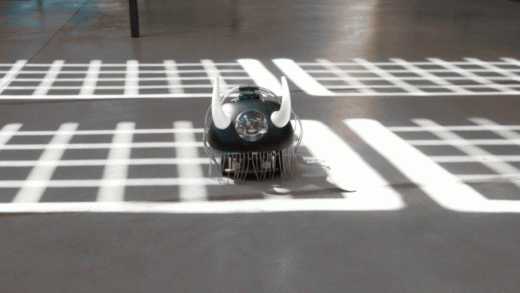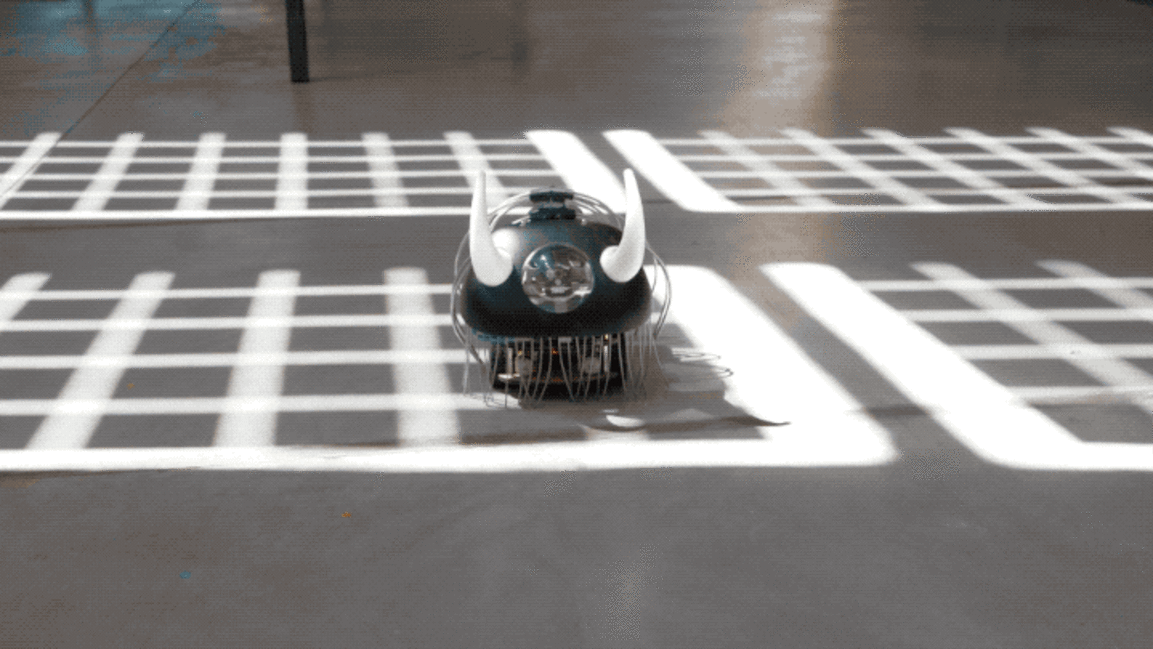Robot swarm! When internet cookies chase you IRL
As you take a few steps into the room, a swarm of robots descends upon your ankles like a pack of puppies. One has horns, like a character straight out of a Studio Ghibli film. Another wears a messy grass skirt too high on its head, like a cross between a hula dancer and Cousin Itt. They are autonomous, AI-filled, vision-tracking surveillance machines. But they are also . . . adorable!
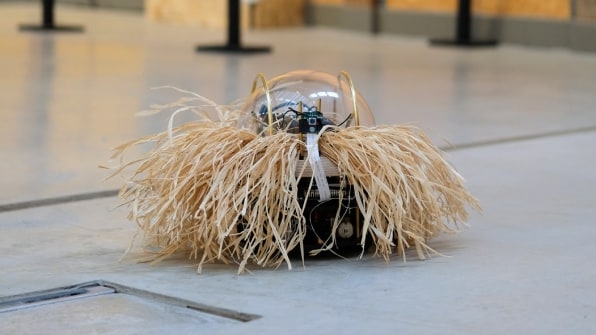
This is Accept All, an interactive installation by the French designer and artist Guillaume Slizewicz that reimagines the internet’s invisible surveillance cookies as approachable robots in the real world. Much like an ad tracker, the robots follow you around everywhere. Unlike an ad tracker, the robots are cuties.
“When we were growing up, there was this optimism about the internet and technology. And little by little, it was all replaced by this doom feeling,” says Slizewicz. “[Accept All] is also about taking back control of this technology.”
While Slizewicz may not categorize it this way, I’d argue that Accept All is post-doom. It’s an acknowledgement of our surveillance dystopia, sure, but it’s more than yet another warning about data trackers. It’s a commentary on our own relationship with these systems, and a prototype of a better way forward for digital surveillance than the massive, global advertising networks owned primarily by Google and Meta (formerly Facebook).
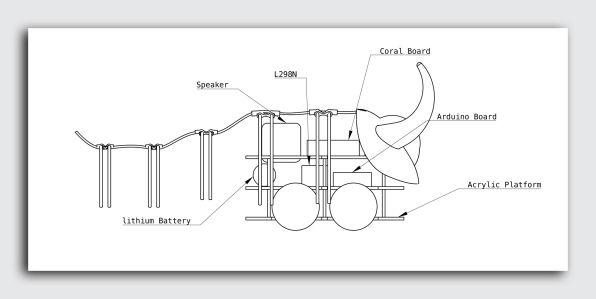
Take the robots themselves. They’re built to be charming digital creatures. Standing about a foot tall, and spotting you with vision AI, they drive up to you in cheerful costume. Much like an “accept all cookies” button on most websites, they are designed to receive your quick approval. “Some people argue that cuteness, the way of making things cute, is a dark pattern,” says Slizewicz. “[So] I have mixed feelings about this performance. Because it’s about raising awareness about dark patterns, but using dark patterns at the same time.”
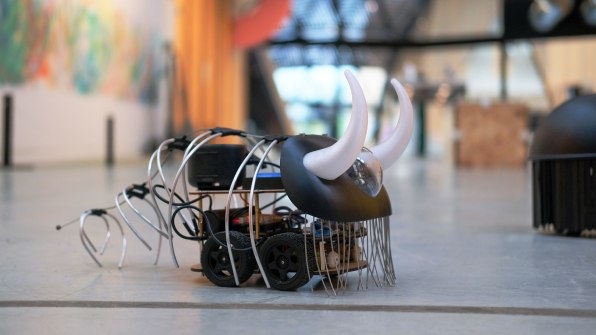
However, Slizewicz also acknowledges the inherent value in his robots’ cuteness, particularly that people derive pleasure from cuteness. The robots, in this sense, are actually providing a service as joyful entertainers.
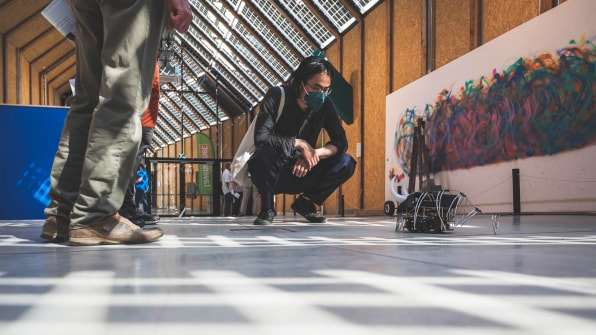
“I think that’s part of the performance, to say, ‘Okay, maybe the future of surveillance isn’t going to be dystopian looking . . . it will be comforting creatures using your data,’ or something of the like,” says Slizewicz.
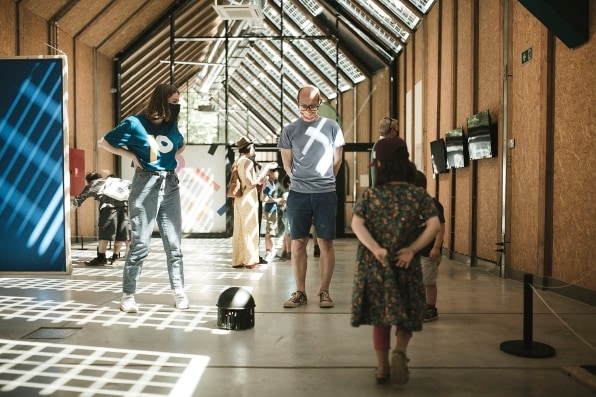
Even still, it’s hard to imagine hanging out with some cute robot by Meta that’s obviously mining your data. Slizewicz has an answer for this concern, too. All of the AI code is being run on each of his robots independently, rather than being collected and analyzed in the cloud. (In this sense, the robots work a lot like the camera on your smartphone, which leverages all sorts of artificial intelligence to make shadowy photos brighter, or focus on someone’s face, without ever accessing the cloud.) Slizewicz imagines that robots on locally run AI could be a way for communities to take back their piece of the surveillance puzzle, to help break both the mundanity and the power of global ad monopolies.
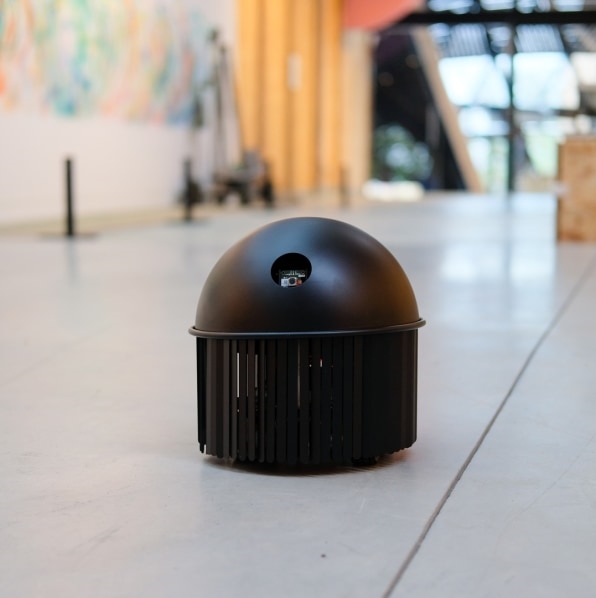
Think about when you walk into a restaurant you visit often. The host recognizes you—maybe even knows your name—and takes you to your favorite table. The waiter asks if you want your usual drink. To have someone know you in a smaller, intimate context doesn’t have to be upsetting; it can be comforting. I see Slizewicz’s little AI bots as adopting a similar model. They are designed to be specific to their context—their city or place of business—and collect information locally only. Instead of being aggregated and anonymized into a global pile of data, his system would treat us much more like individuals visiting a restaurant.
“The internet is so uniform and monopolistic at the moment. I hope it will become quirky, local, and different again,” says Slizewicz. “And the smart cities we build are going to be more about citizens taking control of the tech in local communities than big companies rolling out the same tech everywhere.”
But, alas, there is one lingering catch to Accept All’s lurking, even after you buy into the idea of more responsible, local AI, and cuter data-surveillance robots. Because the core AI technology inside these bots? It’s called Coral. And Coral was built by . . . Google!
(23)

